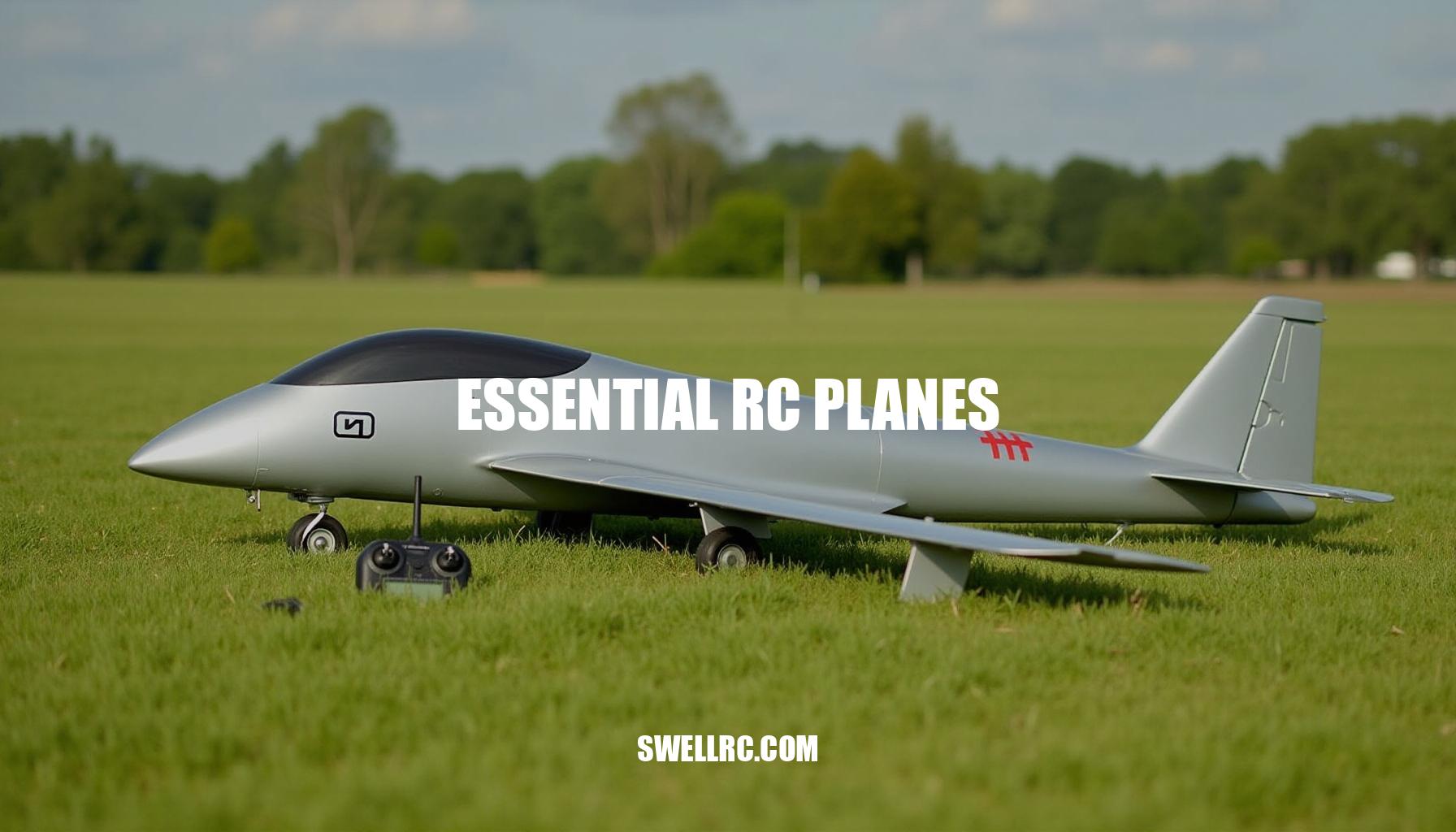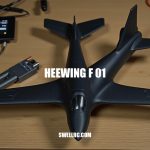Essential RC Planes for Beginners: A Guide to Stability, Durability, and Performance
There’s something deeply satisfying about the afternoon sun warming my back as I stood by the local field, heart pounding from multiple crashes and tweaks, until finally, smooth circuits began to unfold—not just flying, but truly mastering the rhythm of the air. It was in that breakthrough moment that I grasped why some RC planes are genuinely “essential.” These are the remote control aircraft that strike a perfect harmony between forgiving handling, robust durability, accessible parts, stable electronics, and just the right amount of performance headroom to nurture budding skills. In the vast world of model aviation, “essential” planes serve as reliable companions for both beginners and seasoned enthusiasts advancing their craft.
Through my years in the RC hobby, I’ve learned that design choices deeply influence stability; understanding weight classes can transform flying experience from frustrating to exhilarating. When scouting for models worth shortlisting, I naturally lean toward craftsmanship benchmarks like the Esprit, renowned for balancing build quality and flyability (https://www.swellrc.com/esprit-rc-planes/). Whether you’re diving into beginner RC planes or expanding a seasoned fleet, these hands-on insights will guide your journey to selecting the ideal aircraft that grows with your skill and keeps every flight an exciting adventure.
Section 1: What Makes an RC Plane Essential?
When determining the “essential” status of an RC plane, several core pillars guide my evaluation, integrating both technical specs and personal test insights. First, Stability & Control is paramount: high-wing layouts combined with gentle airfoils ensure natural stability, while 3-axis stabilization provides helpful assistance without intruding on pilot inputs—this is key for beginners adapting to flight dynamics. Second, the Build Material plays a crucial role; I prioritize resilient EPO/EPP foams for crash tolerance, with balsa or composites as skill levels advance for increased precision.
Third, the Weight Class affects handling and survivability—lighter models tend to tolerate crashes better and operate in limited spaces like backyards. My testing revealed that sub-250 g lightweight RC aircraft strike a great balance between ease of use and aerodynamic efficiency (see this comprehensive overview). Fourth, Battery Life must support effective learning sessions, generally 10–15 minutes, with honest mAh-to-flight-time expectations to avoid disappointment.
Fifth, Repairability ensures longevity; modular parts, use of standard servos, and common prop sizes help keep downtime low. Finally, the Radio Link & Modes should offer beginner-friendly options like SAFE/gyro stabilization modes alongside a clear progression to full manual control.
Incorporating these considerations, the table below summarizes the beginner must-haves for what features matter in essential RC planes:
| Feature | Why It Matters | Target Spec / Example |
|---|---|---|
| Stabilization | Smooths control inputs and counters gusts; provides Beginner/Intermediate flight modes with quick panic recovery | 3-axis stabilization; SAFE mode |
| Wing Configuration | Ensures naturally stable lift and forgiving flight characteristics | High-wing design; slight dihedral angle |
| Material | Offers crash resilience and durability for learning environments | EPO/EPP foam construction |
| AUW (Weight) | Lower inertia leads to gentler impacts and easier recovery | ≤ 250 g for park flying; ≤ 600 g for field operations |
| Battery | Provides enough practice time to build confidence and skill | 2S–3S LiPo battery; 800–1500 mAh capacity |
| Spares | Reduces downtime with readily available replacement parts | Common props, landing gear, and control horns |
For those interested in indoor or ultra-lightweight builds—a fantastic way to refine control finesse and precision—check out specialized construction techniques for super-light RC indoor planes here: Super Light Indoor RC Plane Techniques. Together, these pillars and specs define the critical features that make for beginner RC planes that are stable, durable, and user-friendly, supporting a smooth learning curve in the fascinating world of RC flight.
Section 2: Breaking Down the Key Categories of Essential RC Planes
For pilots embarking on the exciting journey of model aviation, I highly recommend exploring several core categories of RC airplanes that cater to different skill levels and flying experiences. Each category offers unique characteristics and learning opportunities, making them ideal stepping stones in your flying repertoire.
- Trainer Planes: These forgiving high-wing models are renowned for their self-righting tendencies, making them perfect for mastering takeoffs, coordinated turns, and smooth landings. Their stability helps beginners feel confident, especially when encountering unexpected gusts, as trainers tend to handle wind better than smaller planes.
- Mini and Micro Planes: Compact and often designed for backyard or indoor fun, these quick-to-set-up planes punch above their weight with surprisingly capable performances. They offer a bite-size starting point to ease beginners into model aviation. That said, unlike the forgiving trainers, minis can be a bit more sensitive to gusts, which adds an exciting challenge.
For an excellent starting point, check out some of the top mini RC planes here.
- Aerobatic Planes: If you’re looking to push your boundaries with rolls, loops, and inverted flight, aerobatic RC models are the way to go. These planes strike a fine balance between stability and precision, allowing pilots to execute advanced maneuvers without feeling twitchy. Many World Models setups, for example, offer crisp control surfaces and balanced power systems.
One personal tip: smooth throttle management is key to mastering these planes. Dive deeper into these exhilarating models here.
- Scale Models and Premium Designs: For enthusiasts who appreciate realism combined with refined construction, these sleek airframes come equipped with high-quality hardware. They not only look impressive but also offer a satisfying flying experience. The Pilot series is a great inspiration for those seeking this blend of aesthetics and performance, available here.
Across all these categories, whether you’re exploring the best RC planes for beginners or advancing your skills with aerobatic RC models, each offers distinct rewards and learning curves. Embracing these diversity opens up a full spectrum of experiences in the vibrant world of model aviation.
Section 3: How to Choose the Right Essential RC Plane for You
Choosing the best RC planes for beginners involves a practical framework shaped by hands-on comparisons to ensure a balanced blend of performance and price. Here’s a step-by-step checklist to guide you through how to choose an RC plane effectively:
- Budget: Define a price range that not only covers the plane but also includes spares and extra batteries to avoid mid-flight frustration.
- Skill Level: Begin with a trainer equipped with stabilization features before advancing to aerobats as confidence and control improve.
- Flight Area: Your available space—whether a backyard, gym, or club field—will dictate the optimal wingspan and weight for safe and enjoyable flying.
- Battery Strategy: Plan for two to three battery packs per session to maximize your learning time without interruption.
- Durability: Opt for foam trainers that include skid-friendly landing gear and modular parts for easy repairs and longevity.
From personal experience, beginner-friendly lines like Buddy-style trainers stand out as they incorporate responsive stabilizers that calm pilot inputs without making controls feel mushy, a valuable feature for new flyers. Incorporating electric trainer RC planes is a smart way to gain experience steadily.
Additionally, trying simulator sessions and buddy-box training can accelerate skill acquisition, allowing new pilots to practice safely before flying solo. Early planning for batteries and compatible chargers ensures uninterrupted learning and enjoyment.
| Price Tier | Typical Features | Ideal Pilot | Where to Explore |
|---|---|---|---|
| Under $50 | Toy-grade, short flights | True first-timers testing the waters | Options roundup |
| Budget-Friendly | Durable foam, spares, basic gyro | New pilots seeking real skills | Good values |
| Easy Online Picks | Broad availability, fast shipping | Anyone wanting convenience | Examples |
By following this framework and leveraging resources like those linked above, beginners can confidently navigate how to balance performance and price in RC planes and enjoy steady progress with electric trainer RC planes.
Section 4: Performance Insights – What Really Matters in Flight Tests
Flying remote control aircraft offers a thrilling mix of technical precision and hands-on fun, but interpreting flight data into plain English helps both beginners and seasoned pilots get the best experience. When examining thrust-to-weight ratios, having enough pull to climb out at half to three-quarter throttle is a great sign, indicating your RC airplane can handle maneuvers safely without overstressing the motor or batteries. During field sessions, I noticed that a small wing-angle tweak—a slight change in incidence—dramatically improved my floaty landings, turning ballooning touchdowns into butter-smooth, controlled touches down on the runway.
Turning radius and tracking are influenced heavily by the plane’s dihedral and center of gravity (CG). A trainer-style model with a robust, durable design akin to popular buddy-trainer families will hold its lines cleanly but benefits from trim and expo adjustments to fix any twitchiness or over-sensitivity. This balance in stabilization mechanisms helps the aircraft feel responsive without fighting your inputs.
Wind handling is another critical factor. Lighter / smaller remote control aircraft excel in calm air conditions, while rolling in more weight or opting for a larger wingspan aids stability on windier days. This is particularly true for aerobatic RC models, where fine-tuned control and stability make complex maneuvers possible even when the breeze picks up.
Battery management can’t be overstated when flying these models. Using consistent throttle discipline stretches flight times and by logging mAh consumed, you can better predict when to safely land, avoiding sudden power loss.
Control responsiveness develops over time—using dual rates and expo settings allows you to start with softer, gentler responses and gradually add authority as your skill grows. This progression keeps the learning curve enjoyable and prevents frustrating over-control.
Here’s a quick checklist of Performance-Proven Essentials every remote control aircraft pilot should aim for:
- Clean tracking at cruise throttle
- Predictable stall behavior
- Enough thrust for a safe go-around
- Stabilization that helps but doesn’t fight you
- Honest 10–15 minute flight times on common RC plane batteries
Section 5: Maintenance and Longevity Tips for Your Essential RC Plane
In the RC hobby, maintaining your lightweight RC aircraft after every flight is crucial to prolong its lifespan and ensure consistent performance. Post-flight routines should include checking hinges, horns, and linkages, and carefully wiping away dirt from servos and bearings to prevent wear. During calibration, always re-center trims and perform a rebind if signal glitches appear; don’t forget to confirm the gyro orientation especially after repairs to maintain stable control.
Proper storage is another essential factor; avoid exposing your models to heat and humidity. From personal experience in model aviation, storing planes in a moist attic caused moisture-related warping in lightweight airframes. For RC plane batteries, practice storage charging of LiPo packs, label cycle counts, and retire any packs that have become puffy to ensure safety and reliability.
Keeping spare parts like props, control horns, clevises, and landing gear on hand can save the day during unexpected repairs or upgrades. Investing in better hardware and choosing airframes from reputable lines such as Esprit or World Models can pay off over time because of better spare availability and higher build quality.
| Airframe Material | Typical Wear Points | Inspection Frequency |
|---|---|---|
| EPO/EPP Foam | Prop nicks, foam dents | Quick look every flight |
| Balsa | Hinge joints, covering wrinkles | Thorough weekly in season |
| Composite | Control horns, servo mounts | Pre- and post-weekend sessions |
By following this care plan, RC enthusiasts can enjoy more reliable and longer-lasting model aviation experiences.
Conclusion: Why These Essential RC Planes Deserve Every Pilot’s Attention
Embracing the journey through your first stabilized circuits, savoring the thrill of that initial grease-smooth landing, and conquering the excitement of your first crisp roll all form the cornerstone joys of model aviation. In the world of RC airplanes, pinpointing key essentials such as stability, durability, honest flight times, and upgradable electronics doesn’t just enhance your aircraft—it significantly boosts both your confidence and skill. As you delve deeper into the RC hobby, continue exploring the diverse categories and value tiers highlighted above, and keep iterating your approach by adjusting the CG, meticulously logging flights, and experimenting with different models like a mini or an aerobat.
- Focus on stable, beginner-friendly designs to build foundational skills.
- Choose durable materials and reliable components for longevity and peace of mind.
- Value honest flight times to maximize your practice duration and improvement.
- Opt for upgradable electronics to keep pace with your growing expertise.
Remember, the best RC planes for beginners are those that harmonize technology, craftsmanship, and passion—transforming your practice sessions into moments of pure flow. This beautiful blend invites continuous learning and joy, ensuring your RC hobby remains a rewarding adventure with every flight.
Frequently Asked Questions
- What is considered an essential RC plane for beginners?
A durable, high-wing electric trainer with gentle handling, basic stabilization (beginner and intermediate modes), 10–15 minutes of flight time, and easy-to-find spare parts. - How do I choose the right RC plane for my skill level?
Match stability and features to your experience: start with a trainer and gyro assistance, size for your flying space, and upgrade to aerobatic or scale models as you master takeoffs, landings, and coordinated turns. - Are lightweight RC planes more durable?
They’re often more crash-tolerant because lower mass means lower impact energy, but foam strength and construction quality still determine real-world durability. - What’s the difference between electric and gas-powered RC planes?
Electric is cleaner, quieter, easier to maintain, and ideal for beginners. Gas/glow offers long flight times and classic sound/feel but requires more tuning, field support, and experience. - How much should I spend on my first RC plane?
Plan roughly $80–$200 for a quality beginner setup, plus extra batteries and spares. Sub-$50 toy-grade models are fine for testing interest but have limited longevity. - What features make an RC plane easier to control?
High-wing geometry, some dihedral, stabilization with beginner/angle limits, well-tuned dual rates/expo, and a CG that’s slightly nose-heavy for predictability. - Can sub-250g RC planes perform outdoor flights safely?
Yes—in calm to light winds and open spaces. They’re gentle and portable, but always check local rules, mind bystanders, and avoid gusty conditions.



